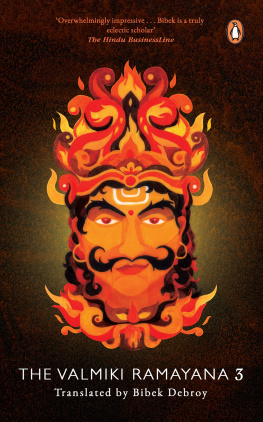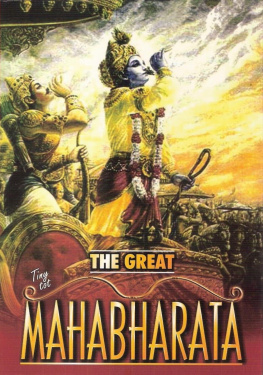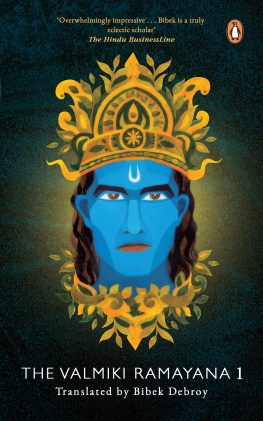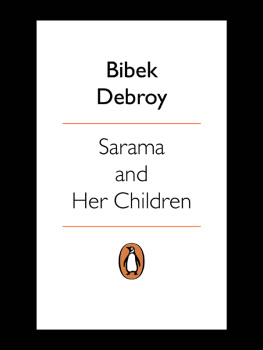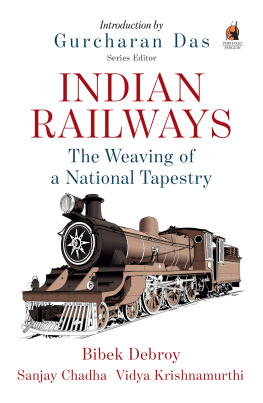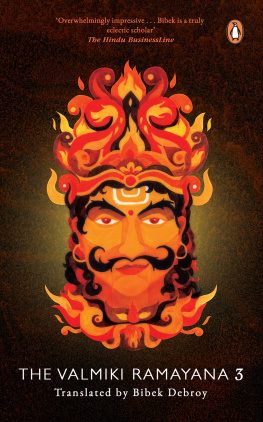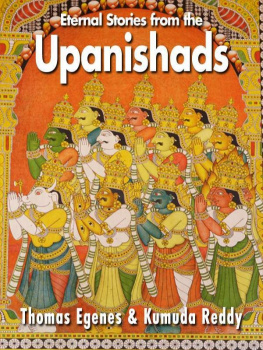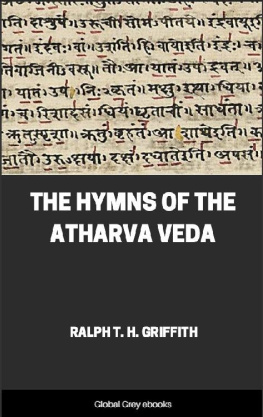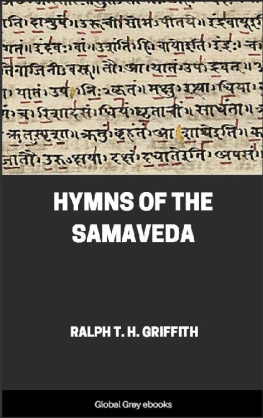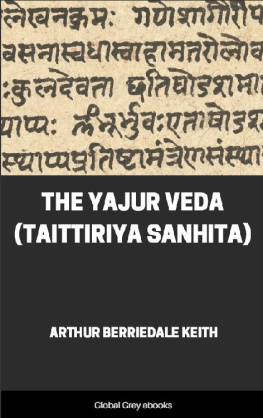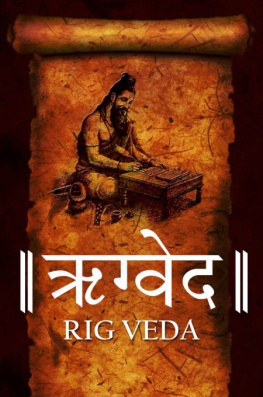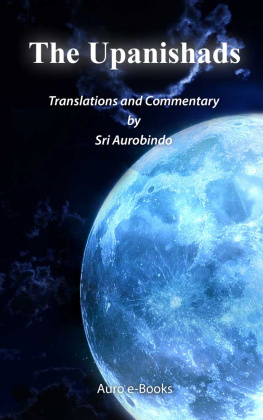The Upanishads
Isha, Kena, Katha, Prashna, Mundaka, Mandukya, Taittiriya, Aitareya, Shvetashvatara, Chandogya, Brihadaranyaka
Bibek Debroy
Dipavali Debroy

(An Imprint of Low Price Publications)
Delhi
Copyright Information
Publisher
All rights, including the right to translate or to reproduce this book or parts thereof are reserved.
Published by
Books For All
(An Imprint of Low Price Publications)
A-6, 2 nd Floor, Nimri Commercial Centre,
Ashok Vihar Phase 4, Delhi 110052 (INDIA)
telefax.: +91-11-47061936
e-mail: info@LPPindia.com
website: www.LPPindia.com
Table of Contents
Copyright Information
Introduction
The Isha Upanishad
The Kena Upanishad
The Katha Upanishad
The Prashna Upanishad
The Mundaka Upanishad
The Mandukya Upanishad
The Taittiriya Upanishad
The Aitareya Upanishad
The Shvetashvatara Upanishad
The Chandogya Upanishad
The Brihadaranyaka Upanishad
Glossary
Introduction
The word Upanishad is derived from the Sanskrit verb sad, which means to sit, and two prepositions, upa (under) and ni (at). The sense is thus of sitting for instruction at the feet of a teacher.
The Upanishads are sacred treatises, spiritual and philosophical in nature. Vedic literature is divided into two broad groups. The first is known as karma kanda, the section that deals with rituals and rites. This has the samhitas, that is, compilations of mantras or hymns. The four samhitas are the Rig Veda, the Sama Veda, the Yajur Veda and the Atharva Veda The mantras require commentaries as explanations. These are the brahmanas. The samhitas and the brahmanas are together known as karma kanda.
The second section of Vedic literature is Jnana kanda, the part that deals with knowledge. This segment is the spiritual and philosophical part and consists of the aranyakas and the Upanishads.
The earliest Upanishads were probably composed between the years 800 B.C. and 400 B.C. Over the years, the number of Upanishads increased. For example, the Allah Upanishad was composed as late as the sixteenth century, during the reign of Emperor Akbar. There is one particular text that is known as the Muktika Upanishad. This lists out the names of 108 different Upanishads. I n addition, four more texts are available, so that the total number of texts in circulation is 112. But as mentioned, several of these Upanishads are of comparatively recent origin.
The major Upanishads are ten or eleven in number. This is based on the fact that Shankaracharya (800 A.D.) wrote his celebrated commentaries oft ten of the Upanishads. These are the first ten Upanishads listed in the accompanying table.
Major Upanishads
Name of Upanishad | Associated Veda |
| Isha | Shukla Yajur |
| Kena | Sama |
| Katha | Krishna Yajur |
| Prashna | Atharva |
| Mundaka | Atharva |
| Mandukya | Atharva |
| Taittiriya | Krishna Yajur |
| Aitareya | Rig |
| Shvetashvatara | Krishna Yajur |
| Chandogya | Sama |
| Brihadaranyaka | Shukla Yajur |
I n addition, Shankaracharya may have written a commentary on the Shvetashvatara Upanishad, a commentary that i s no longer available. If one Includes this text as well, there are eleven major Upanishads. These are the ones we will translate. The other texts are minor Upanishads.
You will have noticed that, in the table, an associated Veda is mentioned with each Upanishad The samhita part of any Veda had a brahmana associated with it. Subsequently, aranyakas and Upanishads also came to be associated with that particular samhita Thus, each Upanishad is associated with one of the four Vedas. The Ya j ur Veda had two different schools, the Shukla (White) Y a jur Veda and the Krishna (Black) Yajur Veda The former is also known as the Vajasaneyi Samhita Each of these two schools of the Ya j ur Veda had separate Upanishads associated with it. Moreover, the Vedas often had distinct recensions or schools. Thus, although both the Prashna Upanishad and the Mundaka Upanishad are associated with the Atharva Veda the former belongs to the Pippalada recension of the Atharva Veda and the latter to the Saunaka recension.
The eleven major Upanishads listed above are fairly short. It is of course possible that the text that is now available does not constitute the entirety of the original Upanishad. This, for example, seems to have happened with the Mandukya Upanishad Two Upanishads are however fairly long. These are the Chandogya and the Brihadaranyaka .
It is now impossible to establish the chronological order in which the Upanishads were composed. But the most likely order seems to be Brihadaranyaka, Chandogya, Taittiriya, Kena, Katha, Isha, Mundaka, Prashna, Mandukya, Shvetashvatara and Aitareya.
The teachings of the Upanishads, together with that of the Bhagavad Gita, form the basis of Vedanta philosophy. But Vedanta itself is subject to many interpretations and there have been three major schools of Vedanta, following the teachings of Shankara (800 A.D.), Ramanuja (first half of 12 th century) and Madhava (14th century). The major conceptions of the Upanishads are uniform. But they differ in details and therefore, alternative interpretations are possible. Since there were different authors at different points of time, it would be illogical to expect them to have a coherent philosophical system. The views of one sage did not necessarily agree with those of another. Does the supreme being possess qualities ( saguna ), or does he have no qualities ( nirguna )? I s the external world real or unreal? I s the human soul an individual agent and finite? Or is it identical with the divine soul and therefore infinite? The Upanishads themselves give differing answers to these questions.
Let us now go on to what the Upanishads have to say. We will begin with the Isha Upanishad.
The Isha Upanishad
(The Isha Upanishad is unique in two senses. It is a very short Upanishad, consisting of only eighteen shlokas or verses. It is also the only Upanishad that forms part of the samhita section of a Veda. The Isha Upanishad is the last chapter of the Shukla Yajur Veda. It is known as the Isha Upanishad because the first word of the text is isha, which means, by the supreme godhead. The motif of the Upanishad is, someone who knows the identity of the human soul with the divine soul is learned. in contrast, an individual who lacks this knowledge is ignorant. The text is composed entirely in verse.)
Every object in the universe is transient. And all s uch objects are encompassed by the supreme godhead. Give up all these transient objects and look to the eternal. Do not lust for the wealth of others. Wealth belongs to no one.
H e who desires to live on this earth for a hundred years, pursues the path of action [karma). There is no other prescribed path for one who aspires for a long life. Deviation from this norm leads one to tread the path of sin.
The worlds where the demons (asur a s) dwell, are shrouded in impenetrable darkness. Individuals who commit suicide are destined for those worlds after their deaths.
(The word suicide needs explanation, since it does not mean suicide in a literal sense. A person who does not follow the righteous path, effectively kills his soul ( atman ). This is tantamount to committing suicide, even though the individual may be physically alive.)
Next page

